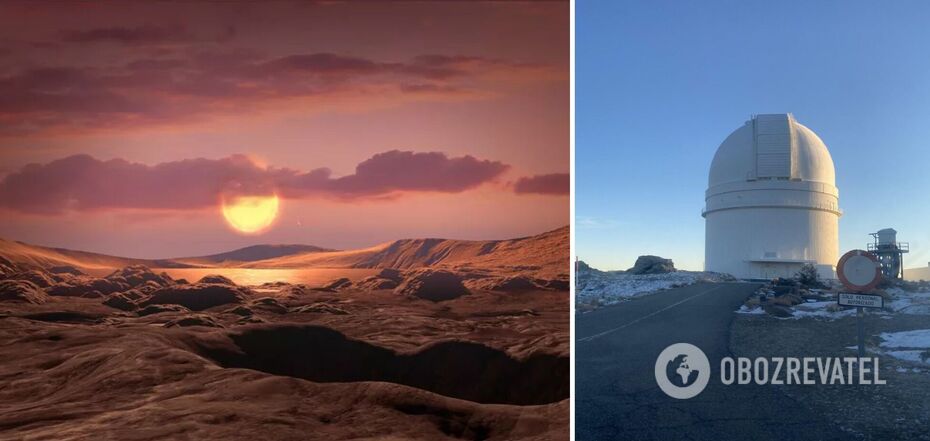Life
Scientists discover planet with possible life: how it looks like Earth
One of the questions that intrigues space explorers the most is whether there is at least one more planet in the infinite universe on which humanity could survive if a catastrophe were to happen to Earth. It seems that they have discovered a potential candidate for the role of our new home. It's Wolf 1069 b, an exoplanet very similar to Earth.
It is a rocky world where water could potentially exist in a liquid state. According to Space.com, this discovery is so exciting because of the more than 5,200 exoplanets discovered to date, only less than 200 are rocky.
Wolf 1069 b is known to be located just 31 light years from Earth, which is very close by the standards of the Universe. It orbits the red dwarf Wolf 1069, which has a mass of only 1.26 times that of the Earth and a size 1.08 times larger. It is also known that the exoplanet orbits in the habitable zone of its star, which potentially allows liquid water to exist on its surface. This conclusion was reached by a team of 50 astronomers from around the world.
"When we analysed the data on the star Wolf 1069, we found a clear, low-amplitude signal of what appears to be a planet with a mass close to Earth's," said lead author Diana Kossakowski of the Max Planck Institute for Astronomy in Germany. According to her, the period of rotation of the discovered exoplanet around its star is only 15.6 Earth days, and the distance to the luminary is 15 times less than the distance of the Earth from the Sun.
For comparison, the planet Mercury, which is closest to our star, makes a complete revolution around it in 88 days. As a result, its surface temperature reaches 430 degrees Celsius. However, unlike Mercury, Wolf 1069 b is within the habitable zone of its host star, although it has a much shorter rotation period.
This is explained by the fact that Wolf 1069 is a red dwarf, i.e. much smaller than the Sun, which is a yellow dwarf. Scientists estimate that the planet they discovered receives about 65% of the solar radiation that the Earth receives. The temperature on its surface should range from -95.15 to +12.85 degrees Celsius (an average of -40.14 degrees Celsius), so it may be habitable.
One of the unique features of Wolf 1069 b is that it is tidally tethered to its star. This means that it is constantly facing only one side of the star, while the other side is always in the shadow, just like the Moon is towards the Earth. The majority of potentially habitable exoplanets orbiting red dwarfs behave in a similar way. On the one hand, this means that there are no cycles of day and night on the object under study. On the other hand, this may mean that there may be conditions for life on its illuminated side.
Due to its relatively close proximity to Earth, Wolf 1069 b has become the sixth exoplanet closest to us that is within the habitable zone of its star. This list also includes (in ascending order of distance) Proxima Centauri b, GJ 1061 d, Tigarden c, and GJ 1002 b and c. The climate simulations of the global climate model indicate that it makes sense to look for so-called biosignatures - chemical traces of life - on Wolf 1069 b. And only a very small group of exoplanets can boast of this.
The discovery of Wolf 1069 b was made possible by CARMENES, an exoplanet search tool located on a 3.5-metre telescope at the Calar Alto Observatory in Spain. CARMENES can observe astronomical objects using two separate spectrographs in both the visual and near-infrared wavelengths. Wolf 1069 b was detected using a technique known as radial velocity. It detects small deviations in the position of a star due to gravitational interaction with its planet.
According to Kossakowski, scientists are currently unable to describe the atmosphere of Wolf 1069 b using the existing method of transmission spectroscopy. This is because Wolf 1069 is not a transiting planet. However, scientists expect that they will be able to develop a working method for this in the coming decades. Therefore, the researcher predicted that the grandchildren of people of her generation may see scientists finally find extraterrestrial life.
Earlier, OBOZREVATEL published an impressive video of exoplanets orbiting their star, which was filmed for 12 years.
Subscribe to OBOZREVATEL's Telegram and Viber channels to keep up with the latest news.



























